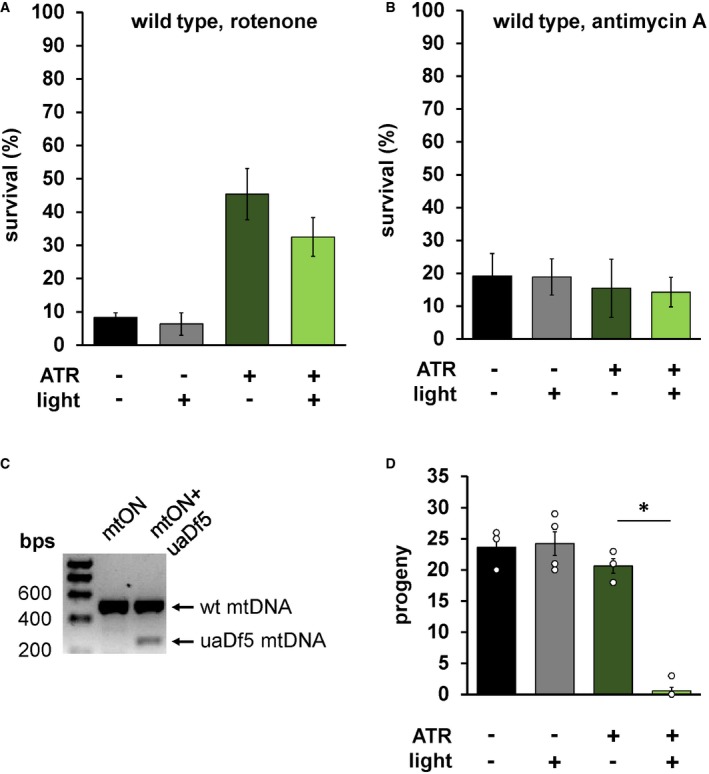Figure EV5. ATR and light have no effect on wild‐type survival, and mtON abolishes viability of animals harboring the uaDf5 mitochondrial genome deletion.

- Same experimental conditions from Fig 3A, here testing wild‐type animals. No difference in survival within ATR conditions, suggesting the interaction between ATR and light has no effect on its own. One‐way ANOVA with Tukey's multiple comparison test. Again, ATR alone was protective (−ATR, −light versus +ATR, −light P = 0.0111. n = 3, 3, 7, 6 plates each bar from left to right). Data show mean ± SEM.
- Same experimental conditions from Fig 3B, here testing wild‐type animals, showing no difference in survival. One‐way ANOVA with Tukey's multiple comparison test. n = 3 plates each condition. Data show mean ± SEM.
- PCR amplification of mitochondrial DNA (mtDNA) confirming uaDf5 mtDNA at ˜299 base pairs (bps) in mtON‐expressing animals. Wild‐type mtDNA is amplified at ˜500 bp. The presence of both bands indicated animals harbor the uaDf5 mtDNA deletion (see Materials and Methods).
- Number of progeny that reached L4 stage after 4 days of illumination of one parent animal. One‐way ANOVA with Tukey's post hoc test, *P < 0.0001 (−ATR, −light versus +ATR, +light P < 0.0001, −ATR, +light versus +ATR, +light P < 0.0001. n = 3, 4, 3, 5 plates each bar from left to right). Some individual points overlap. Data show mean ± SEM.
